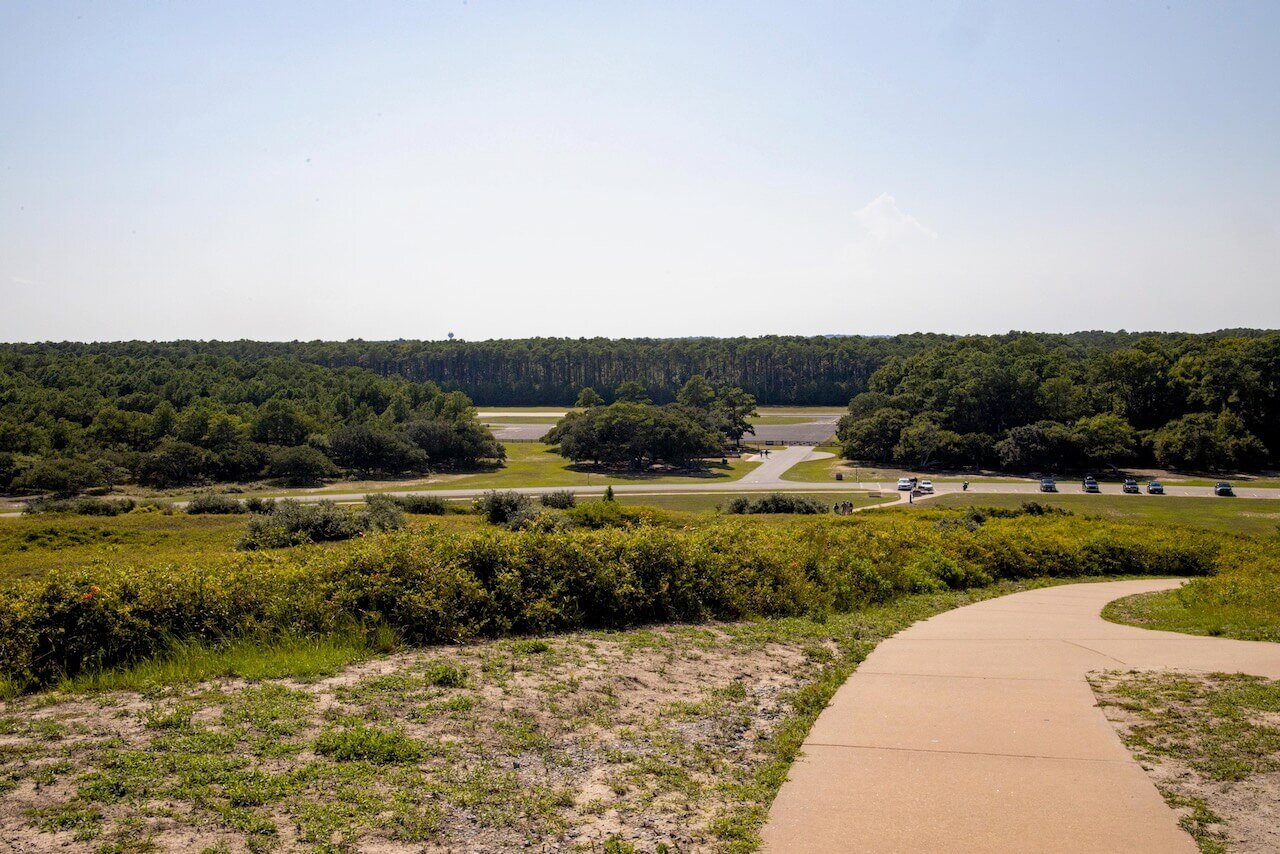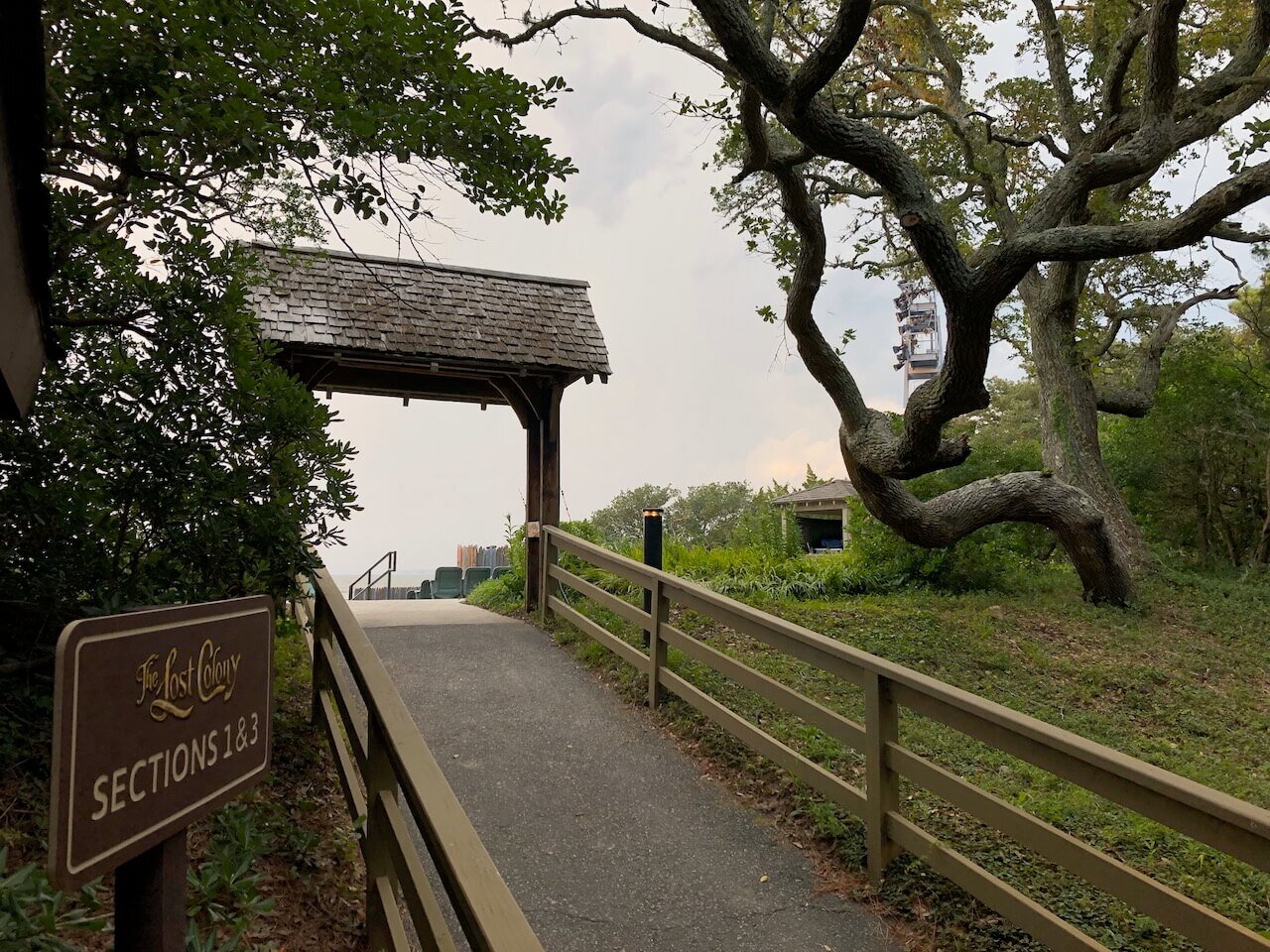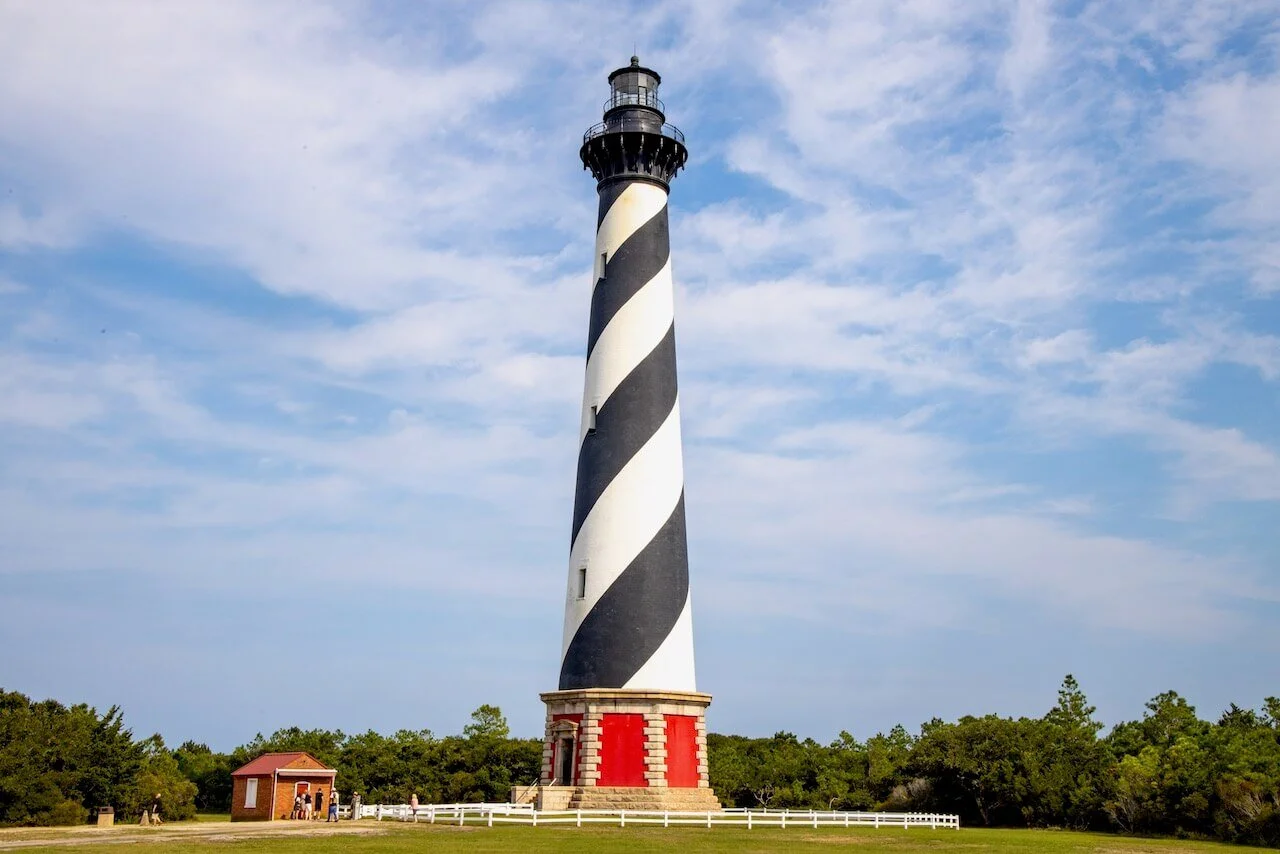4 Enchanting Coastal Parks on North Carolina’s Outer Banks
By Amy Beth Wright and Derek Wright
Four majestic, historic, and scenic parks on the Outer Banks of North Carolina are a quick journey from one other, and can easily be combined into long holiday weekend exploration or enjoyed over several summers. Each has a fascinating story and simply awe-inspiring natural features.
Jockey’s Ridge State Park, Nags Head, North Carolina
Because of the great appeal of the Outer Banks as a vacation destination—the beaches, piers, beachside towns, waterfront dining, meandering boardwalks, and exceptional culinary scene— state parks might not be the very first thing one associates with the area. Bypassing Jockey’s Ridge, home to the largest sand dune system on the Atlantic Coast, would be mistake. The scale of the dunes, and the sense of immensity and absence of tangible borders as one crosses the ridge to approach the shoreline, are both stilling. This is a rare parks’ experience, as the landscape is on par with the magnitude of the Yellowstone caldera, the depth and scale of the Yosemite Valley, and the wonder found at White Sand Dunes in New Mexico, yet is accessible to so many travelers, given the density of population in the northeast, Mid Atlantic, and southeast regions of the U.S.
The park offers a 360-foot boardwalk, a nature trail (which younger hikers will enjoy, as its marked with fun, colorful signs that point out native flora), sweeping dune walks in which fellow hikers are small specks across a high, sandy, plateau where space (and time) feel limitless, and hang gliding lessons via a concessionaire. Kite flying, picnicking, and photography are also wonderful options here. Read more on arranging both hang gliding lessons as well as accessibility options (with a call ahead the day before visiting, an ATV can be arranged for transport to the top of the dunes), at https://www.ncparks.gov/jockeys-ridge-state-park/home
Wright Brothers National Memorial, Kill Devil Hills, North Carolina
This park is inspiring and its narrative is beautifully rendered in interpretive exhibits, capturing the spirit of invention and determination that fuels scientific trial and error. The park interprets and protects the land where the first successful airplane flight took place in 1903. In truth, Orville and Wilbur Wright had conducted several experiments near the park for years leading up to their first successful flight—their efforts began with tests in 1900, and then, methodically, they practiced flying the gliders (which were more kite-like), finally innovating to the point they could get their glider into the air for a sustained period of time with controlled flight. Power was added in 1903 and on December 17th, the first sustained flight occurred, with Orville at the controls flying for 120 feet. The visitor center showcasing a Modernist approach to the Art Deco style and was finished in the 1960s as part of Mission 66 and restored in 2018. For a deep dive into the historical construction, led by NPS Historical Architect Daniel Scheidt, check out this comprehensive report from the NPS.
Make time to linger within the permanent exhibition, which details the timeline to flight and provides wonderful cultural and historical context about what drove the Wright Brothers, and others during this time, to undertake this effort. The Visitor Center also features a full-scale replica of the Wright Flyer, along with salvaged pieces from the original. Outside, walk the flight line, the xx feet flown in the four different trial flights, ultimately culminating in the xx long flight by Wilbur via a short foot trail. After, climb to the top of the sand dune to appreciate the memorial itself, and for a great birdseye view of the park. There is no camping, but picnic tables are available, as is an actual airfield! The park is open year-round, but does keep 9-5 business hours and is gated.
Fort Raleigh National Historic Site, Roanoke Island
This NPS site in Manteo, North Carolina (one of two towns on Roanoke Island; Wanchese is the other), was designated as Fort Raleigh State Park in 1934 by the North Carolina Historical Commission, and added to the NPS as a historical site in 1941. Here, the history of the first English arrivals to the Atlantic Coast, between 1500 and 1585, is preserved. In 1587, all English settlers mysteriously and inexplicably disappeared, such that this area has noted historically as “the lost colony” for centuries. There are also remnants of the Freedmen’s Colony here, a series of communities formed after emancipation by the Union Army, with visions of long term planned communities rooting here as African-Americans made their way to the coast in increasing numbers. Unfortunately, the Freedmen’s Colony was decommissioned in 1867, as, per the NPS, “At the end of the war, a government order restored all lands that were confiscated by the Union army back to the original owners. The black residents on Roanoke Island failed to receive the rights and privileges to their homesteads promised by the government when they established the colony.” The site offers unflinching interpretation (check out its comprehensive website) of the role of piracy, profiteering, colonization, and slavery in the history here, as well as insight on archeological remnants and navigation by ship to the colonies, while preserving the story of English settlers first attempts at cultivation and survival. Rangers offer regular “Lost Colony” walking tours, and fishing is possible, with a permit, which you can learn more about here.
There are a few ways to spend time here. Paul Green’s play, The Lost Colony, has run at the Waterside Theater here since 1937; in recent years, a refreshing of the choreography and other elements has brought new insight to the production. The production is open-air and quite scenic, with seats in the amphitheater offering coastal views and a coastal breeze.
The Elizabethan Gardens, adjacent to the theater, originated in 1951 from efforts made by the North Carolina Garden Clubs. These gardens preserve several elements of the Elizabethan ethos, like the way that spirituality could be expressed in landscape design, with core elements at the center of measured, labyrinthine pathways. Within are many stunning promenades, with beautiful vessels and sculptures framed by Virginia Live Oaks, camellias, and sculpted topiaries. Many of these artifacts are remnants of the Whitney estate, and some found their way here otherwise. In particular, the statue of Virginia Dare, who was reputedly the first English child born in the colonies in 1587 (the child of Ananias and Eleanor Dare) has a fascinating story. Created in 1859 by Maria Louisa Lander, it was lost in a shipwreck while en route from Italy. The artist paid to rescue it, but some felt the nudity problematic once the statue was displayed in a government building in Raleigh. In the 1930s, it ended up at the Chapel Hill home of playwright Paul Green, and eventually made its way to the gardens. Note that Lander added several nods to Carolina Algonquin culture, in the beading and fabric.
Cape Hatteras National Seashore, Hatteras Township, North Carolina
The 62-mile drive “down the cape” from Kill Devil Hills is quite rewarding, as one travels several Outer Banks anchor towns, like Nags Head, Rodanthe, Avon, and Buxton. The road becomes narrower and inches alongside the coast onto Hatteras Island. The National Seashore offers four lifeguarded beaches (Coquina, Ocracoke, Frisco, and Old Lighthouse), as well as camping, fishing, hiking, and tours of two historic lighthouses, Cape Hatteras Lighthouse and Bodie Island Lighthouse. Both can be climbed (self-guided) though check the website before visiting, as restorations can sometimes impact visiting hours.
When heading south from Kill Devil Hills, we love to stop for coffee at Front Porch Café in Kill Devil Hills, or in Buxton, at Orange Blossom Bakery and Café. Also in Buxton, consider Diamond Shoals for lunch or dinner, which has a nostalgic salad bar (complete with sunflower seeds, black olives, croutons, and loads of fresh veggies) and exceptional fresh fish—the “fried bites” are fried grouper, a local delicacy. The light fry and tangy aioli are replenishing while leaving room for more culinary exploration. Be sure to also book a tour of an oyster farm while on Hatteras Island, to get a sense of where many oysters on restaurant menus throughout the state originate, and how oysters “shore up” the barrier island by creating reefs which offer protection and stability during runoff periods and storm events. Read more about North Carolina’s new Oyster Trail here: https://ncoysters.org/oyster-trail/
Other popular Parks & Points articles:


































